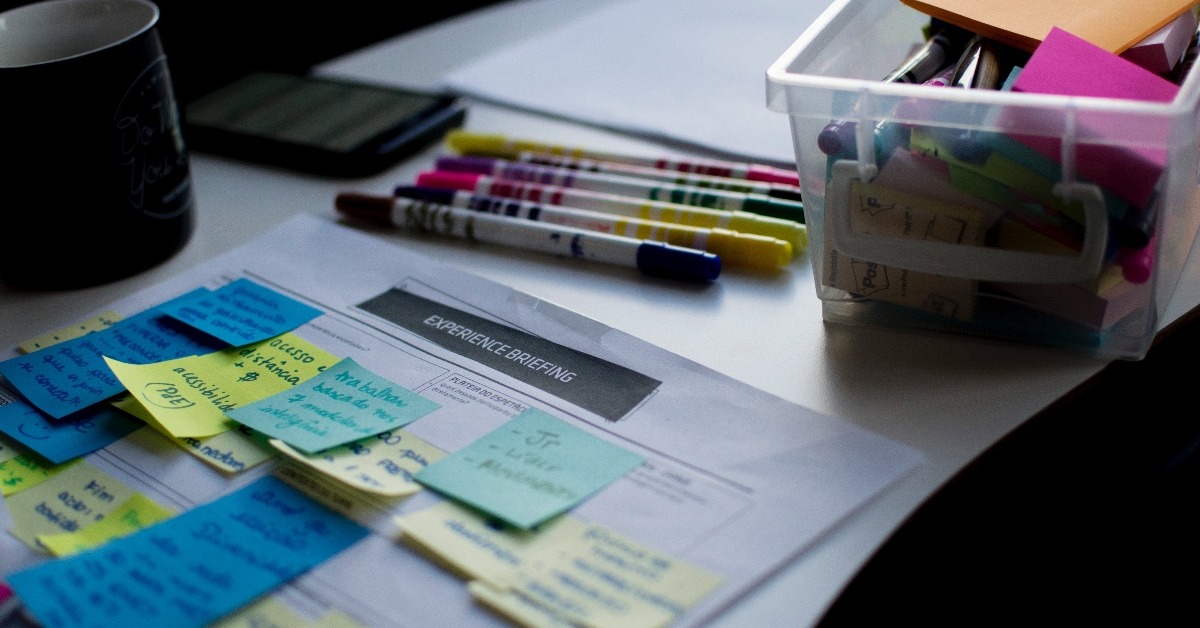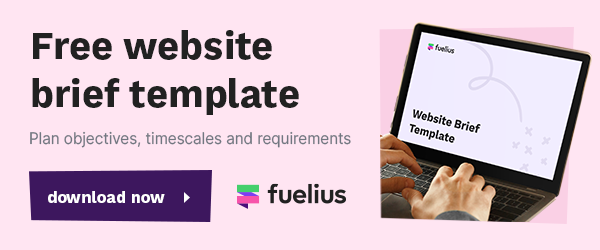
Are you looking to create a new website, but don't know where to start on the brief? We know it can be a tricky process, but gone are the days when traditional offline marketing was all you had to consider.
Don't fret, with our helpful agency guide you will have created the perfect website brief in no time.
- Introduce your brand
- Analyse your current website
- Understand your target audience
- What are your aims and objectives
- Scope out your competition
- Features and function requirements
- Assign budgets and deadlines
- Free website brief template
Introduce your brand
When you go onto a website there will often be an “About Us” page, giving a clear indication to readers what your business sells and how the brand portrays itself. Starting your brief with this information will lay the foundation of where you want your website to go. Who are you and what do you want your audience to know? Once you have this clearly defined it then helps to inform everything else on your website. Other factors that you should consider in this stage are:
- Tone of voice
- Mission
- Brand history
- Values
- Purpose
- Market positioning
- Branding
- Ethics
- Sustainability
- Core beliefs
Analyse your current website
Take a good look at your present website and analyse the good and bad points. What would you like to carry on to your updated website and what would you like to get rid of all together? This should be made clear in your brief. Negative points that you may want to improve and that can easily be pointed out include; not mobile friendly, poor links, page speed, poor user experience, video malfunctions. Working on these factors will help to increase leads and time visitors spend on the site.
As well as looking at the negatives of your site, you should also take a look at the positives. What is working well on your site that you would like to keep on your new site? Is your site easy to navigate, do videos retain visitors and is the layout engaging? If so, make this clear in your brief, especially if there is data to back up your reasoning.
Understand your target audience
Knowing exactly who your target audience is, along with buyer personas will help guide your website redesign. Your personas should include demographics, age, lifestyle, likes and dislikes and other relevant characteristics. In your brief, you should state exactly who the website will be targeting, so it can be specifically tailored to them and will add genuine value.
Understanding who your target audience is is very important because something that may work for one group of people, may not work for another. These details will affect the user experience, using quantitative data and qualitative surveys are great ways to find out what your current audience likes and dislikes about your site. Make sure you also highlight in your brief who your ideal visitor would be and the journey you hope that they take.
What are your aims and objectives?
A website is there to serve a purpose and to properly serve a purpose there needs to be aims and objectives in place. Knowing exactly what you want to achieve from your website, will help guide the development stages and ensure you and your visitors are satisfied. When it comes to websites, there are a few objectives that may be common across businesses these include:
- Boost search engine rankings
- Lead generation
- Increase sales
- Increase brand awareness
- Capture emails
- Become an information hub
Scope out your competition
Although you don't want to become too focused on what your competitors are doing, it may be wise to analyse the pros and cons of their sites to see what is working and what could be improved.
This will help to guide your own site and ensure you don't make the same mistake that others are and likewise you can take ideas that are successful and mould them into your own. Including these ideas within your brief, you could also include ideas from other businesses in different sectors, highlighting features and functionalities that positively stand out to you.
Features and function requirements
By understanding what your main goals and objectives are, we can then move on to what features and functions would be most effective. You should also have a rough idea on how each feature should work and maybe share real examples in your brief. For a website to be successful and serve its purpose there are a few main requirements that should be considered including:
- Blog section
- Language specific versions
- Navigation
- Forums
- Social media feed
- Multimedia
- Live chat
- CTAs
- Contact forms
- Interactive elements
Assign budgets and deadlines
Your budget should be determined and clearly stated within the brief. Websites can range in cost depending on features and functionality. No matter what your budget may be, there are many ways to make a fantastic and effective website, even without spending a fortune.
When would you realistically like the project to be completed by? This also ties in with budget and how long you would like to be spent on creating a website. Make this clear in the brief and also communicate with the developers whether this is achievable.
Get started with our free website brief template
Sometimes, you just need something to get the ball rolling. That's why we've put together a free website brief template covering all of the key features you need to consider so that you get the very best outcome for your new website.
We've taken years of experience working with clients on website briefs to collate the most important aspects – also taking into account what we as an agency require from your brief so that it helps smooth the process for both sides of the process.





